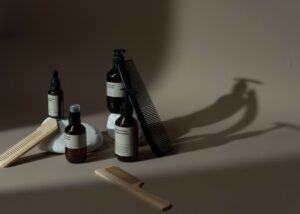A Hair Care Dilemma

Shampoo is an essential component of our daily grooming routine, helping us maintain clean, healthy, and beautiful hair. But have you ever wondered how long you can keep using that bottle of shampoo that’s been sitting in your shower for months? In this beauty blog, we’ll explore the shelf life of shampoos, factors affecting their longevity, and tips for making the most of your shampoo investment.
The Shelf Life of Shampoos
Shampoos are formulated to cleanse the hair and scalp effectively, but they are not immune to the passage of time. Like many cosmetic products, shampoos have a shelf life, and it’s essential to understand the factors that influence it. Here’s what you need to know:
- Expiration Dates: Some shampoos come with an expiration date printed on the packaging, indicating the period during which the product is considered safe and effective to use. If you find an expiration date, it’s a clear guideline to follow.
- Preservatives: Shampoo formulations often contain preservatives to prevent the growth of bacteria and molds. The presence and effectiveness of these preservatives play a significant role in determining the product’s shelf life.
- Packaging: The way the shampoo is packaged can affect its shelf life. Products in sealed, airtight containers are less prone to contamination and evaporation than those in bottles with loose caps.
- Exposure to Light and Moisture: Excessive exposure to light and moisture can break down the ingredients in shampoo, rendering it less effective over time.
Recognizing When Your Shampoo Has Gone Bad
While shampoos do have a shelf life, it doesn’t mean that they suddenly become unsafe to use after a certain date. However, when shampoo goes bad, it may not work as effectively as intended, and there may be noticeable changes that signal it’s time to replace the bottle:
- Change in Scent: One of the most apparent signs that your shampoo has gone bad is a noticeable change in scent. If your shampoo begins to smell off, rancid, or foul, it’s time to say goodbye.
- Texture Alterations: Shampoos can undergo changes in texture over time. If your shampoo becomes clumpy, separated, or unusually thick or thin, it may have lost its effectiveness.
- Lack of Lather: Shampoos should lather well to cleanse the hair. If you find that your shampoo no longer produces a rich lather, it may not be working as it should.
- Irritation or Allergic Reactions: If your scalp or skin starts to experience irritation, redness, or allergic reactions after using your shampoo, it’s a clear sign that something has gone wrong with the product.
Prolonging the Life of Your Shampoo
To maximize your shampoo investment and ensure it remains effective for as long as possible, consider the following tips:
- Seal the Cap Tightly: Always ensure that the cap or lid of your shampoo bottle is sealed tightly after each use. This prevents exposure to air and moisture.
- Store in a Cool, Dry Place: Keep your shampoo in a cool, dry place away from direct sunlight and humidity. Avoid storing it in the shower, where it’s continually exposed to moisture.
- Avoid Contamination: Be mindful of the cleanliness of your hands and the containers you use to dispense shampoo. Avoid introducing bacteria into the bottle.
- Use a Pump Dispenser: If your shampoo comes in a bottle with a screw-on cap, consider transferring it to a pump dispenser. This reduces the likelihood of contamination.
- Purchase Smaller Bottles: If you find that it takes you a long time to use a large bottle of shampoo, consider purchasing smaller bottles that you can finish before the product degrades.

Using Expired Shampoo: A Beauty Myth or Reality?
There’s often a common misconception that using expired shampoo is harmful. In reality, the expiration date on shampoo is more about the product’s efficacy than its safety. While it’s generally safe to use shampoo past its expiration date as long as it hasn’t shown signs of spoilage, it may not perform as effectively as a fresh bottle. The scent and texture may also change, potentially affecting your overall experience.
In conclusion, understanding the shelf life of shampoos and recognizing signs of spoilage is essential for maximizing your shampoo investment and maintaining the health and beauty of your hair. While using shampoo beyond its expiration date is generally safe, it’s wise to follow your senses—your nose and your hands—when deciding if it’s time to replace that bottle. After all, the ultimate goal is to keep your hair clean, beautiful, and nourished, and your shampoo plays a significant role in achieving that.

